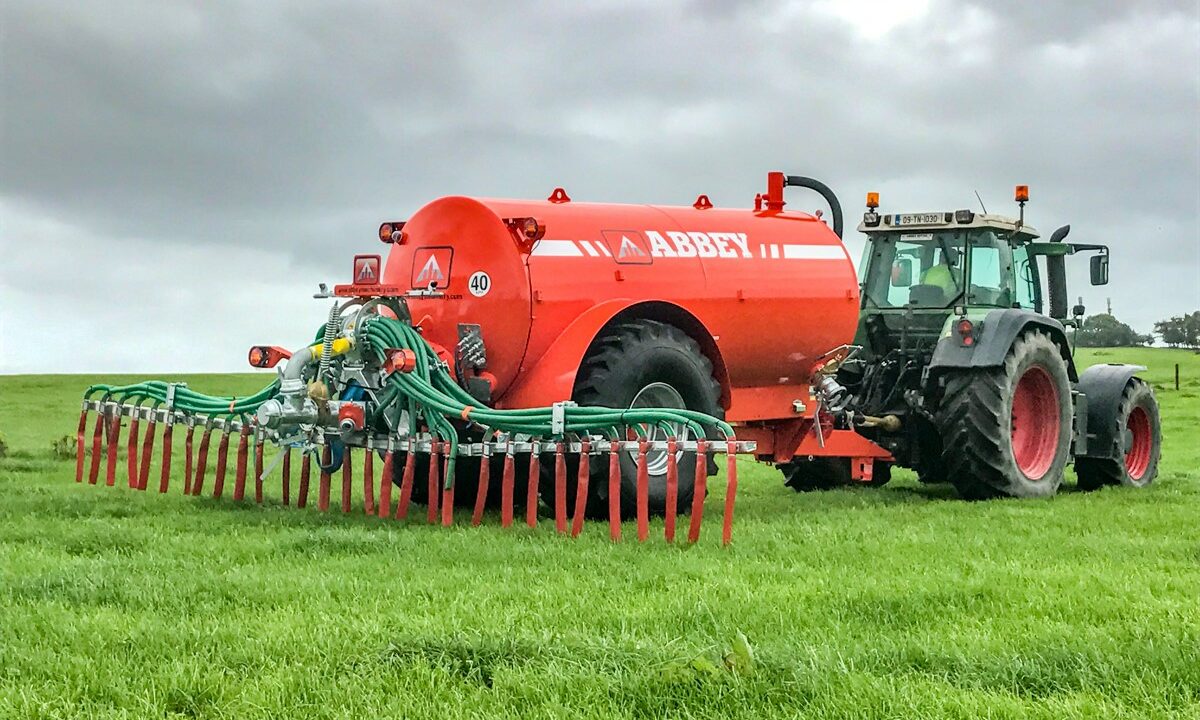Ireland’s nitrates derogation came under serious pressure from the European Commission during the negotiations earlier this year which secured an extension to the derogation.
It emerged in June that, from January 2024, derogation farmers in some areas of the country may see the maximum allowable nitrogen per hectare (N/ha) cut from 250kg N/ha to 220kg N/ha.
This will impact farmers in areas where water bodies are classed as polluted or at risk of pollution, which will be based on data from the Environmental Protection Agency (EPA).
However, during negotiations, the commission originally proposed cutting the derogation for impacted areas to a figure that was “a lot lower” than 220kg N/ha.
That’s according to Ted Massey, senior inspector in the nitrates division at the Department of Agriculture, Food and the Marine.
Speaking yesterday (Tuesday, August 2) at a briefing on amendments to the Nitrates Action Programme (NAP) – which were confirmed last Friday – Massey highlighted that it will not be until June of next year that the EPA will have available water quality data for this year.
The Department of Housing, Local Government and Heritage (which oversees the derogation) will then have until September 2023 to notify the commission of which areas the reduction in the derogation will apply to.
That will leave impacted farmers with only four months to offset the cut in derogation by reducing cow numbers, exporting nutrients or acquiring land.
“We had these discussions with the commission. We were very clear that the cow that is going to be calving in 2024 will already be in calf [in September 2023]. Is that an appropriate timeline to make adjustments? But the commission was adamant that if we wanted the nitrates derogation, we had to accept this condition,” Massey outlined.
He explained: “You have to look at the background to the discussions and the negotiations. Compared to the last derogation secured in late 2017, we’ve had a significant increase in the number of dairy cows in the country, a significant increase in chemical nitrogen use, and at the same time we’ve seen water quality trends going the wrong way.
“Bear in mind, the commission is not obliged to give any member state a nitrates derogation. The commission had to be assured that, in granting Ireland the derogation, it would not be running any risk in terms of water quality.”
According the department of agriculture official, the commission was adamant that it could not wait until later in our NAP to see the impact of measures.
“If we don’t see our water quality accounts going the right way, then when we go back to the commission in 2025 we are going to be faced with a very difficult conversation. At least if we can show water quality improving, we’ll be able to say to the commission our measures are working, and hopefully there won’t be a need for further ones,” Massey said.
He added: “If we can’t identify that our measures are working, the reality is that the commission will push us to introduce further measures.”
Massey stressed that the maximum N figure under the derogation for areas classed as polluted could again be slashed when Ireland goes to secure a further extension, with the commission originally seeking a lower figure than 220kg N/ha in the latest extension.
“We had to decide then whether it was appropriate to go with that 220 and secure the derogation in March, or face the alternative of continuing to negotiate with the commission, with the result that we wouldn’t have secured the derogation in March, and still might not have [secured it],” Massey highlighted.
He noted that the Netherlands has still not secured an extension to its derogation (which expired last year), and he expressed uncertainty over whether that country would secure a derogation at all.
“Ireland is one of only three member states that currently has a nitrates derogation. It’s ourselves, the Danes and the Flanders region of Belgium. The Netherlands are trying to secure one. All other member states have either given up or been thrown out of derogation.”
According to the EPA, the areas of the country where bodies of water have the highest concentration of nitrogen are located in the east and southeast, overlapping with most dairy farming activity.
Ploughing under nitrates derogation
Back in May, the department came under fire for another change to the NAP for derogation farmers – namely the ban on ploughing grassland after May 31.
Massey again highlighted that this was a point the commission insisted upon.
This condition already existed for temporary grassland. However, the commission proposed this time around that, not only should it apply to all grassland, but that ploughing grassland should be permitted only in the months of March and April.
The commission subsequently relented on the latter point, with the Irish officials arguing that, in Ireland, the actual meteorological spring runs until the end of May.
Reseeding grassland by other minimum tillage (‘min-till’) methods is still permitted.
